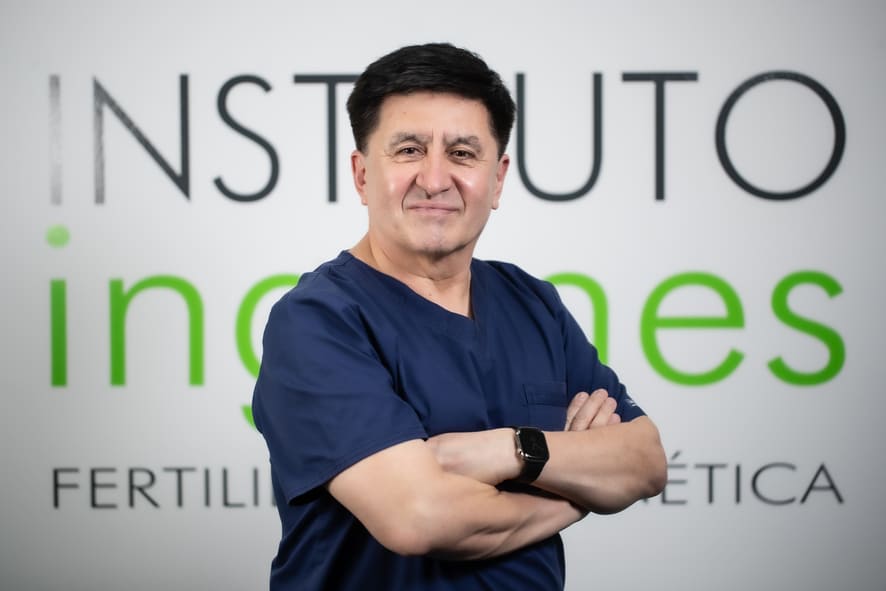


The technique is specifically designed for individuals facing challenges related to egg quality due to:
IVF MORE® is an innovative technique that restores low-quality oocytes to increase the chances of pregnancy using the patient’s own eggs.
The process begins with ovarian stimulation to retrieve oocytes, which are then individually analyzed through a metabolic diagnosis that assesses their energy deficit. A cytoplasmic restoration is then performed using the patient’s own cells, replacing cellular energy and optimizing the oocyte’s fertilization capacity.
The best sperm are selected through advanced techniques, and in vitro fertilization is carried out. The resulting embryos are cultured in a magnetic field environment to support their development and ensure proper cell division.
Oocyte restoration helps reduce genetic abnormalities so that viable embryos can be transferred to the uterus under optimal conditions, increasing the chances of a successful pregnancy.
Benefits
Studies conducted with IVF MORE® have shown promising results:
Limitations
IVF MORE® is a revolutionary technique that restores the quality of oocytes, but there are cases in which its application is not possible.
The main limitation for undergoing IVF MORE® is the total absence of oocytes. This technique is designed to improve oocyte quality—without a mature egg to restore, the treatment cannot be performed.
In some cases, patients who have stopped menstruating may still produce at least one egg with ovarian stimulation. If a patient can still generate an egg, IVF MORE® becomes a viable option to increase her chances of achieving pregnancy using her own genetic material.
If no viable eggs are present, egg donation may be considered as an alternative to help the patient become a mother.
Edad avanza, el óvulo comete errores genéticos: Large cytoplasm predisposes oocytes to meiotic errors: http://www.cdb.riken.jp/en/news/2017/researches
/062910912.html#:~:text=The%20oocyte%27s%20large%
20cytoplasm%20is,segregation%20errors%20
observed%20during%20meiosis
IVF MORE® is an innovative technique that restores low-quality oocytes to increase the chances of pregnancy using the patient’s own eggs.
Here we lay out the step by step process.
(Click on the numbers to learn about each part of the process)
Beneficios
Los estudios realizados con IVF MORE® han mostrado resultados prometedores:
Limitaciones
IVF MORE® es una técnica revolucionaria que permite restaurar la calidad de los óvulos, pero existen casos en los que su aplicación no es posible.
La principal limitación para someterse a IVF MORE® es la ausencia total de óvulos. Esta técnica está diseñada para mejorar la calidad ovocitaria: sin un óvulo maduro para restaurar, no se puede llevar a cabo el tratamiento.
En algunos casos, hay pacientes que han dejado de menstruar, pero que aún pueden producir al menos un óvulo al recibir estimulación ovárica. Si una paciente aún puede generar un óvulo, IVF MORE® es una opción viable para mejorar sus probabilidades de lograr un embarazo con su material genético.
En caso de que la paciente no presente ningún óvulo viable, se podrá recurrir a la donación de óvulos como una alternativa para que logren ser mamás.
Edad avanza, el óvulo comete errores genéticos: Large cytoplasm predisposes oocytes to meiotic errors: http://www.cdb.riken.jp/en/news/2017/researches
/062910912.html#:~:text=The%20oocyte%27s%20large%
20cytoplasm%20is,segregation%20errors%20
observed%20during%20meiosis
As women age, their eggs undergo metabolic and structural changes that impair their ability to generate viable embryos. These changes include:
These factors contribute to poor oocyte quality, failed IVF cycles, cycle cancellations, embryo arrest, and the formation of abnormal embryos (with chromosomal abnormalities), increasing the risk of pregnancy loss and implantation failure.

IVF MORE® addresses these issues through a multi-step approach:
Magnetic Fields – Nature: https://www.nature.com/articles/srep37407

Shoukhrat Mitalipov, Ph.D. / Center for Embryonic Cell and Gene Therapy : Meet Shoukhrat Mitalipov, Ph.D./ His pioneering work with mitochondria could help eliminate genetic disease: https://www.ohsu.edu/embryonic-cell-gene-therapy-center/meet-shoukhrat-mitalipov-phd